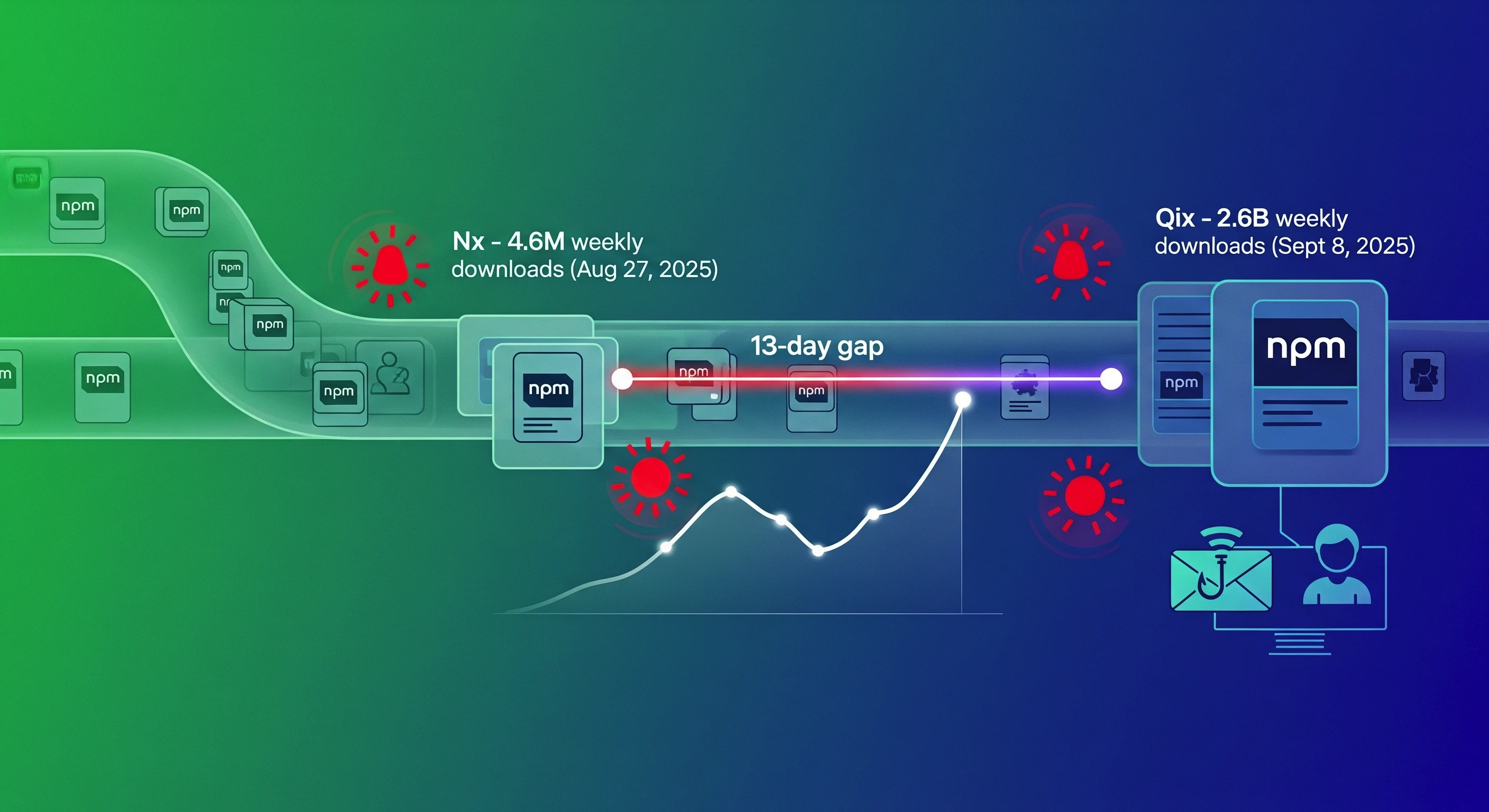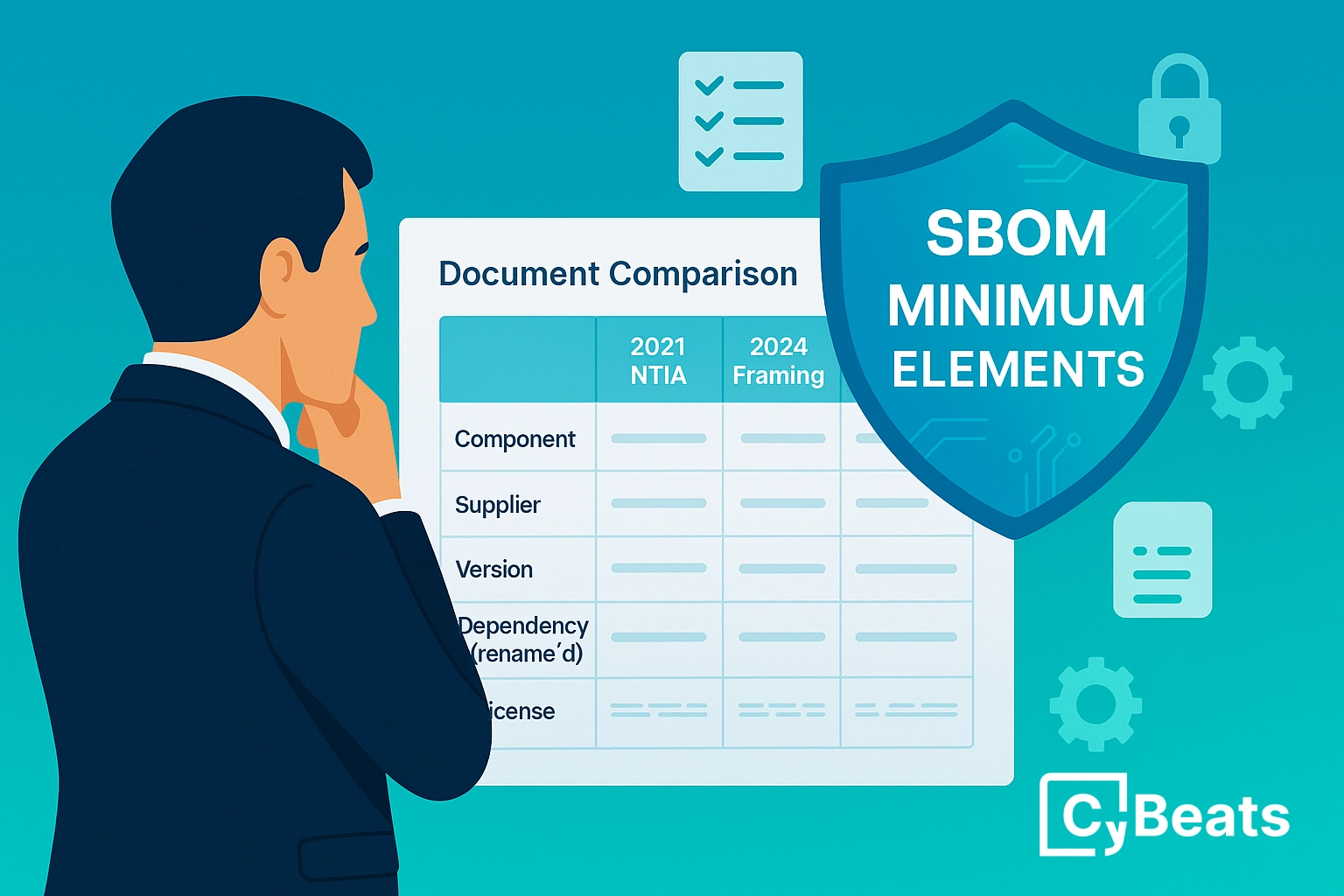What Is an SBOM Generator and How and When Should You Generate SBOMs?
.webp)
SBOM generation tools collection that was compiled by cybeats engineering team:
GitHub - cybeats/sbomgen: Listof SBOM Generation Tools
An SBOM generator is a tool or software that automatically creates a Software Bill of Materials (SBOM) for a software application. The SBOM generator scans the application's code and dependencies and creates a list of all the components and their versions, including libraries, frameworks, and other third-party components. This list is then used to track the provenance of software, identify potential security vulnerabilities, and ensure license compliance.
SBOM generators can be integrated into the software development process, allowing developers to generate an SBOM as they work on their code. This can help organizations to keep track of the components they are using and identify any potential security vulnerabilities in a timely manner.
Types of SBOM Generation Tools
SCA Tools
These are commercial tools that use static code analysis techniques to scan the codebase and generate an SBOM. They often integrate with CI/CD pipelines and provide a comprehensive view of the software components and dependencies, including version information and known vulnerabilities. They also offer a graphical user interface and a centralized repository to manage the SBOM.
Open Source Command Line Interface (CLI) Tools
These are free, community-driven tools that are typically run from the command line. They generate an SBOM by analyzing the source code, package manifests, and other metadata. Examples of open-source CLI tools for SBOM generation include WhiteSource Bolt, Snyk CLI, and Dependency Track. These tools are often used for smaller projects or for projects that need to integrate with existing CI/CD pipelines.
Dynamic SBOM
A dynamic SBOM platform is a type of SBOM tool that can automatically and continuously update the Software Bill of Materials (SBOM) of an application throughout its lifecycle. This means that it can automatically identify new components and dependencies as they are added, updated, or removed from the application and update the SBOM accordingly.
Dynamic SBOM platforms can be used to monitor the application at runtime and identify the components and dependencies used. They can be integrated into the software development pipeline, such as the build system, the continuous integration pipeline, or the artifact repository.
Dynamic SBOM platforms can be useful for organizations that are continuously updating and deploying their applications and want to ensure that they have an up-to-date and accurate view of the components and dependencies used in their applications. They can also be used to track the provenance of software and identify potential security vulnerabilities in a timely manner.
6 Steps to Generating an SBOM
The process of generating an SBOM will differ depending on the specific tool you use. But these are the general steps involved:
1. Identify the scope of the SBOM: Determine which components and dependencies will be included in the SBOM. This may include libraries, frameworks, and other third-party components used in the application.
2. Choose an SBOM tool: Select an SBOM tool that fits the organization's specific needs and requirements.
3. Scan the application: Use the SBOM tool to scan the application's code and dependencies. The tool will analyze the application and identify the components and dependencies used.
4. Generate the SBOM: The SBOM tool will generate a list of all the components and their versions, including libraries, frameworks, and other third-party components.
5. Review and validate the SBOM: Review the generated SBOM to ensure that it is accurate and complete. Validate the SBOM by reviewing the version number and other relevant details of the components.
6. Store and maintain the SBOM: Store the SBOM in a secure location and make sure that it is easily accessible to the relevant parties. Update the SBOM as needed to reflect any changes made to the application.
When to Generate a Software Bill of Materials
An SBOM can be generated at different stages of the software development lifecycle. These stages are:
At the Source Code Stage
Generating an SBOM at the source code stage involves analyzing the codebase to identify all the components and dependencies used in the software project. This is typically done before the software is built and deployed, and the SBOM is used to provide a comprehensive view of the software stack.
Advantages of generating an SBOM at the source code stage include:
• Early Identification of Security Vulnerabilities: By analyzing the codebase, it is possible to identify potential security vulnerabilities early in the development process. This information can be used to plan for updates or patches before the software is deployed.
• Improved Software Management: An SBOM provides a comprehensive view of the software components and dependencies, which can be used to manage the software more effectively. This information can also be used to track the provenance of components and to ensure that the correct versions of components are used in the software.
• Improved Compliance: By generating an SBOM at the source code stage, it is possible to ensure that the software meets the required security and compliance standards before it is built and deployed.
During Build-Time
Generating an SBOM during build-time involves analyzing the components and dependencies used in the software project as it is being built. This provides an up-to-date view of the software stack, including version information and known vulnerabilities.
Advantages of generating an SBOM during build-time include:
• Real-Time Visibility: By generating an SBOM during build-time, it is possible to get a real-time view of the components and dependencies used by the software. This information is useful for ensuring that the software is built with the correct components and that it meets the required security and compliance standards.
• Improved Build Process: An SBOM generated during build-time can be used to automate the build process and to ensure that the correct versions of components are used in the software.
Generating SBOM During Runtime
Generating an SBOM during runtime involves capturing the components and dependencies used by the software as it is running. This information is useful for diagnosing problems with the software, identifying potential security risks, and monitoring the software's performance.
However, generating an SBOM during runtime is not widely available and there is no clear workflow for merging the data generated using this method with the original SBOM documentation.
Additionally, runtime SBOM generators may have an impact on the performance of the software, and the information captured may not always be complete or accurate. Examples of runtime SBOM generators include Jbom and ThreatMapper.
SBOM Studio -Managing the Lifecycle of your SBOMs

Cybeats' SBOM Studio is a comprehensive solution designed to manage and distribute software bill of materials (SBOMs) in a single platform. It provides organizations with a centralized view of cybersecurity vulnerabilities, enabling them to improve the visibility and security of their software supply chain. SBOM Studio is useful for organizations of all sizes and industries, as it helps them to improve their vulnerability management processes, reduce the cost of protection, and enhance compliance.
SBOM Studio is also agnostic to SBOM generation tools, meaning it can work with any tool to validate and correct imported SBOMs, improving the accuracy of SBOMs. In addition, it simplifies the implementation process, speeds up the fixing of vulnerabilities, and automates SBOM management, ultimately improving the return on investment of SBOM adoption in an organization.
After generating software bill of materials (SBOMs) using any SBOM generation tool, clients who upload their SBOMs to Cybeats' SBOM Studio can gain valuable insights into their software supply chain with the following features:
Automated SBOM Management
• During the import of SBOMs, SBOM Studio will validate the SBOM to ensure correct formatting according to the specification of the SBOM standards
• SBOMs that are not accurately formatted will either be auto-corrected for recoverable errors or rejected with meaningful information describing the root cause of the misalignment
• SBOM Studio enriches SBOMs as part of the import process, populating them with key information and details about the software supply chain intelligence data
Accelerated Vulnerability Management
• Continuous process of monitoring SBOMs, autonomous scanning for new vulnerabilities. SBOMs are living and breathing in SBOM Studio
• Categorizes and filters vulnerabilities by level of criticality to inform decision making
• Search for and identify specific SBOMs rapidly, and confidently and securely identify compromised components across the organization
Improved Workflow for Security Operations
• Prompts cyber teams with the recommended actions to optimally fix vulnerabilities and reduce cyber risk
• Display and categorizes vulnerabilities by level of criticality for prioritization of security workflow
• In leveraging a robust data lake, accurately determine how vulnerabilities affect your organization’s security posture
• Native plug-ins and other integrations that allow for seamless workflow
• User-intuitive interface is easy to learn and understand
SBOM Sharing and Exchange Capabilities
• Securely share SBOMs with regulatory agencies, internal and external customers
• Share product SBOMs, while keeping your IP protected
• Ability to redact and hide specific parts of an SBOM before they are shared externally
• SBOM language agnostic with acceptance of all SBOMs, and easy conversion between SBOM languages
Data-Driven Business Decisions
• Report generation and visually appealing dashboard, for use by leadership, to bridge gaps between vulnerability status and the budgeting, forecasting, risk-mitigation, prioritization strategies
• Offers‘ Governor View’ vantage that allows enhanced visibility into all the layers and subsidiaries of the core business, giving development, cyber teams and leadership more information to better prioritize and evaluate the risks and associated costs across the organization
Regulatory Compliance and Licence Infringement
• Satisfy Governance, Risk and Compliance (GRC) requirements by showing best practices and good cyber hygiene by having an SBOM for all of your own software, and for any 3rd-party products used by your enterprise
• License Infringement Notifications, when software that is used without permissions or licenses that can have associated legal risk and cost
.png)
.svg)
See Cybeats Security Platform in Action Today
We shortened our vulnerability review timeframe from a day to under an hour. It is our go-to tool and we now know where to focus our limited security resources next.
.svg)

SBOM Studio saves us approximately 500 hours per project on vulnerability analysis and prioritization for open-source projects.
.svg)


.svg)
.svg)












